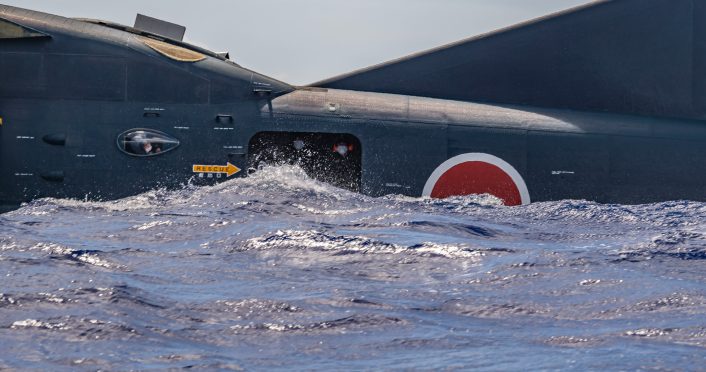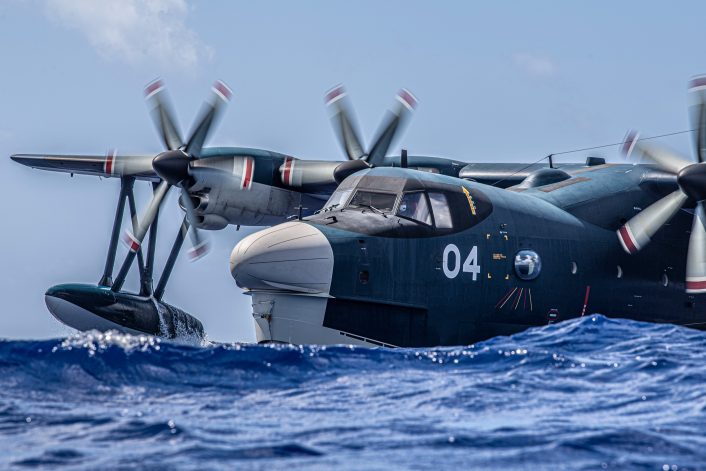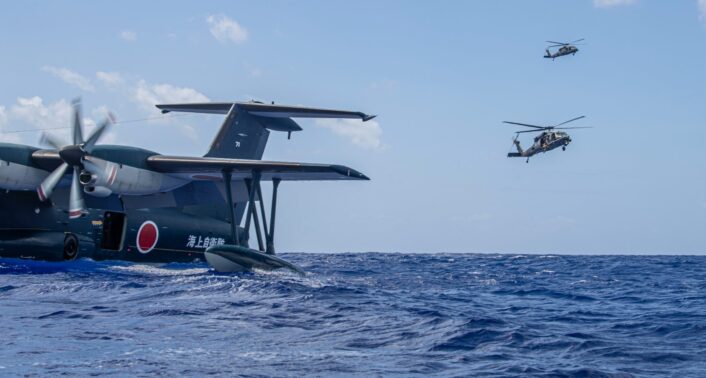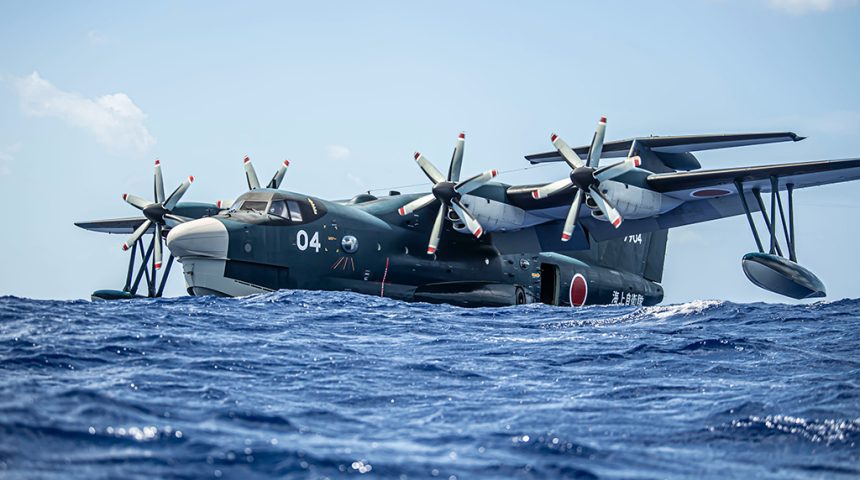The Japanese US-2 amphibious aircraft took part in Exercise Cope North 22 along with U.S. forces in the Pacific region.
Because of the region’s dependence on maritime trade and territorial disputes over small islands, large, long range “flying boat” amphibious aircraft (i.e. aircraft able to land on either land or water) have a history of utility and success in the Indo-Pacific. Japan is a pioneer to the use of flying boats. Their first designs date back to WWII continuing into modern aviation with the Shin Meiwa US-1A maritime patrol aircraft from the 1970s to 2017, and, more recently, the four-engine ShinMaywa US-2.
Based at Iwakuni, west of Hiroshima, in the southern end of Japan’s Honshu island, the US-2 fleet is operated as STOL (Short Take Off and Landing) Search and Rescue Amphibian by JMSDF (Japan Maritime Self-Defence Force) 71 Kokutai. Including the now retired US-1A, Japan’s STOL amphibians have been dispatched over 1,000 times to rescue victims of maritime accidents.
In popular culture the amphibious aircraft and their crews take on mystic relevance because of their guardianship of sailors at sea and their ability to swoop down from the sky and save doomed men adrift in the open ocean: in fact, just like the rather impressive US-1A it has replaced, the US-2, which is a modernised version of its predecessor, is capable of taking off and landing on the ocean, therefore able to quickly reach remote islands without an airport or sites of maritime accidents, efficiently transporting the wounded and urgent patients in emergencies.

The US-2 has remarkable performance: its action radius is 1,900km (expanded from the 1,500 km of the US-1A) and its STOL capabilities are quite amazing: the amphibious aircraft just needs about 280 meters on water to take off and 330 to land. Moreover, it is a quite advanced aircraft with glass cockpit, pressurized cabin, FBW (Fly-by-wire), and four Rolls-Royce AE 2100J turboprop engines each capable of 4,592hp. Moreover, the aircraft is equipped with a BLC (Boundary Layer Control) powered high-lift device [the F-104 Starfighter used one as well] that allows it to cruise at extremely low speeds (approx. 90 km/h) and take off and land on water within a very short distance.

Six US-2s are currently in service out of a total 14 aircraft the JMSDF intends to operate.
From Feb. 2 – 18, the amphibious aircraft took part in Cope North 22 exercise a humanitarian assistance and disaster relief (HA/DR), large force employment, and aerial combat training exercise. During the drills, the US-2 operated from Andersen Air Force Base, Guam, and also took part in a joint mission with the U.S. Air Force HH-60G Pave Hawks with the 33rd Rescue Squadron.
The activity with U.S. pararescuemen took place at the Island of Tinian near Guam, and provided a good opportunity for the U.S. Air Force photographers to take some good shots of the US-2 at work in the waters of the Pacific Ocean.

By the way, China has also invested in large flying boats. In December 2017, the Chinese AVIC AG600 long-range maritime security and patrol amphibious aircraft made its first flight from land at the Jinwan Civil Aviation Airport in Zhuhai, Guangdong, China. The large, four-engine turboprop aircraft, with a wingspan of 127-feet, is slated to become the largest amphibious aircraft. It is comparable in size the jet-powered twin-engine P-8 Poseidon maritime patrol aircraft but adds the capability to land and take off in the open ocean, even in relatively heavy seas.
H/T @ryankakiuchan for the heads up!








